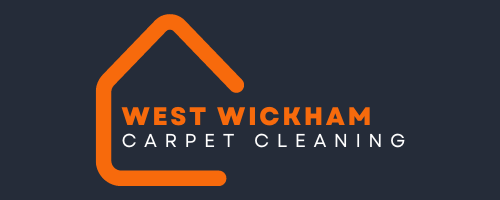Introduction
Your carpets may look spotless to the naked eye, feel soft underfoot, and even smell fresh. But appearances can be deceiving—especially when it comes to indoor allergens. For many homes in West Wickham, allergies don’t always stem from pollen or outdoor pollutants. In fact, carpets that are “clean enough” could still be harbouring microscopic triggers such as dust mites, mould spores, and pet dander.
At West Wickham Carpet Cleaning, we regularly help households across Bromley tackle the hidden sources of discomfort that vacuuming alone can’t solve. In this post, we’ll explore why carpets that seem clean may still be responsible for allergic reactions and how professional cleaning makes all the difference.
The Hidden World Beneath Your Feet
Even with regular vacuuming, allergens can settle deep into the fibres of your carpet, where they stay trapped and go unnoticed. Over time, these particles accumulate and become airborne every time someone walks across the room, sits on the floor, or opens a window.
Common carpet allergens include:
- Dust mites – thrive in warm, humid environments and feed on dead skin cells
- Pet dander – microscopic flakes of skin shed by cats, dogs, and other furry animals
- Mould spores – especially in areas with poor ventilation or previous spills
- Pollen – brought in from outside, clinging to shoes, clothes, and pets
- Bacteria – introduced through foot traffic and not always removed by surface cleaning
Without deep cleaning, these allergens remain embedded within the pile, continuing to affect the air quality in your home.
Why Vacuuming Isn’t Enough
Most people vacuum once or twice a week and feel confident that it’s enough to keep their floors hygienic. While regular vacuuming does remove surface debris and loose dirt, it doesn’t reach the lower layers of the carpet where allergens are most concentrated.
Limitations of standard vacuuming:
- Doesn’t extract allergens trapped below the surface
- Can stir up and redistribute particles into the air
- Misses moisture-based contaminants like mould or bacteria from spills
- Often ineffective on thicker carpets or shag styles
Only a deep extraction method, such as hot water extraction or steam cleaning, can remove allergens at the root of the fibres.
The Allergy Connection
If you or your family members frequently suffer from sneezing, itchy eyes, coughing, or asthma-like symptoms indoors—especially after cleaning—the carpets could be to blame. Allergens trapped in the pile can be disturbed by everyday activities and remain in the indoor environment for hours.
Allergy symptoms linked to carpet allergens:
- Persistent sneezing, even when the room is tidy
- Nasal congestion or itchy throat, especially in the morning
- Skin irritation or eczema flare-ups
- Increased asthma attacks or breathing issues at night
- Allergy symptoms that improve when away from home
Even if your carpet looks clean, the underlying allergens can continue to wreak havoc on your indoor environment.
DIY Cleaning Can Sometimes Make It Worse
Some homeowners attempt to steam or shampoo their carpets using rented machines or DIY sprays. Unfortunately, improper methods can cause more harm than good. Over-wetting, insufficient rinsing, and slow drying times can lead to mould growth, fabric damage, and an increase in allergens.
Risks of improper carpet cleaning:
- Over-shampooing – leaves residue that attracts more dirt
- Slow drying – creates an ideal environment for mould spores
- Inadequate heat – doesn’t kill dust mites or bacteria effectively
- Excess moisture – can soak into underlay and cause long-term problems
At West Wickham Carpet Cleaning, we use professional-grade equipment that balances temperature, pressure, and suction to ensure deep but safe cleaning—something that DIY tools simply can’t replicate.
Prevention and Maintenance Tips
Regular professional cleaning is the most effective way to reduce allergens in your home, but it should be supported by good daily habits. Keeping a clean and allergy-conscious home environment takes more than one approach.
Tips to reduce allergen buildup:
- Use doormats and remove shoes at the door
- Vacuum high-traffic areas at least twice a week
- Use a vacuum with a HEPA filter to trap fine particles
- Groom pets regularly and keep them off fabric-covered furniture
- Schedule professional carpet cleaning every 6–12 months
Combining these habits with expert carpet maintenance helps keep allergens at bay all year round.
Conclusion
Your carpet might look clean, but if it’s not been professionally treated in a while, it could be acting as a hidden reservoir for allergy triggers. Dust mites, pollen, pet dander, and mould all find a home deep within carpet fibres—well below the reach of your everyday vacuum cleaner.
At West Wickham Carpet Cleaning, we specialise in deep-cleaning methods designed to extract allergens and restore healthy indoor air quality. If allergy symptoms persist in your home, your carpets may be playing a bigger role than you realise. Trust our team in West Wickham and Bromley to deliver the kind of cleanliness you can truly feel.
Contact West Wickham Carpet Cleaning today and let us help you breathe easier with a home that’s genuinely clean—top to bottom.
Call us on: 0203 872 0692
Click here to find out more about West Wickham Carpet Cleaning
Click here to complete our contact form and see how we can help with your carpet needs.

